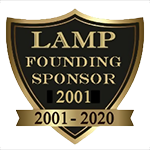|
|
eMoviePoster.com - The most trusted vintage original movie poster site & the only major online auction with no buyers premiums!
Did you know... that after barely changing for nearly 100 years, one-sheets had several changes starting around 1980? (Part Two)
Return to Did You Know ArchiveAdded: 03/26/2012
(if you missed Part One, you will find it in club message
#582, on our site at
https://www.emovieposter.com/club/returnmessage.php?id=649)
In Part I, we described that there were next-to no changes made to
the size of one-sheets and larger posters from turn of the 20th century until around 1980. There
were several small but important changes that occurred starting around this time. The first was that
one-sheet posters had always been folded with the image on the inside, so as to protect it from the
image getting smudged when it was handled (especially by theater employees with greasy
popcorn-stained fingers!). But this meant you had no idea what the poster was without opening it, so
they had employees stamp each poster on the back with its name, size and any special info (like
style).
But this was time-consuming and expensive, and yet it wasn't until around
1980, when someone came up with the idea of folding the posters outward, so that part of the image
showed and they folded them so that the name of the poster (in small letters on the bottom) showed!
This was made possible because they had switched to printing on a glossier paper stock that was
MUCH more resistant to smudging.
The second change occurred a few years later. First, some history. Why did
movie posters have blank white borders around the edges anyway? It was because early printing
presses needed a space where the machine would hold each blank sheet as it went through the press,
and that necessitated at least one blank border. Since it looked odd to only have one such border,
they added an even space all around, to "frame the poster".
In 1929, Paramount experimented with posters that had a "full-bleed" (no
blank borders) and this was likely accomplished by having the blank borders trimmed off during
printing (and the small info was printed inside the very bottom of the image). But this resulted in
slightly smaller posters, and likely theater owners did not like them because they did not fit in
their existing frames, and at some point in 1930 the experiment was abandoned.
But in the mid-1980s printing presses were made that COULD print
full bleed posters, and at first posters had a full bleed on three sides and a thin area on the
fourth side that contained the printer info. But they soon realized that the posters looked better
with a full bleed on all four sides, and at that time the standard poster size was lowered from 27"
x 41" to 27" x 40".
A few years later, around 1990, studios experimented with unfolded
one-sheets (likely because the folds were more noticeable on the glossier paper that was used, and
that was quickly adopted as the standard, and soon after they began printing "double-sided" posters
(ones that had either a full or partial reverse image of the front printed on the back) because
these made the images display much better in the "light box" frames many theaters were switched to,
which illuminated the posters from the back).
Now none of these changes happened at an exact time! One studio would
experiment with a change and when it proved successful the others would also make the change, but it
might take a while for all of them to do so, so there would be an overlapping time where one-sheets
could be found "both ways". You surely noticed that I have not been precise about the dates these
changes started. IF ANYONE READING THIS HAS ADDITIONAL INFORMATION (or corrections) TO WHAT I
WROTE ABOVE, PLEASE CONTACT ME AND I WILL UPDATE THIS INFO!
Next (in Part Three): What about inserts, half-sheets, and window
cards?

|
Complete Buyer Protection - No time limit on our guarantees & NO buyer beware
Hershenson
Help Hotline - Direct line to Bruce (our owner!) for urgent problems
Also, please read the following two pages of Consignor Reviews
-
Page 1,
Page 2,
and two pages of Customer Reviews of our company
-
Page 1,
Page 2,
which shows you in our customers' own words exactly what makes our company and our auctions so very different from all others! |
 |

Postal Mailing Address: Bruce Hershenson, P.O. Box 874, West Plains, MO 65775.
(For our UPS or FedEx address, click here)
Our address for UPS or FedEx only is:
Bruce Hershenson,
306 Washington Avenue, West Plains, MO 65775
phone: +1 417 256-9616 fax: +1 417 257-6948
E-mail: Contact Us
Hours of Operation:
Monday - Friday 8:30 AM - 12:00 PM & 1:00 PM - 5:00 PM (CST)
|
|






